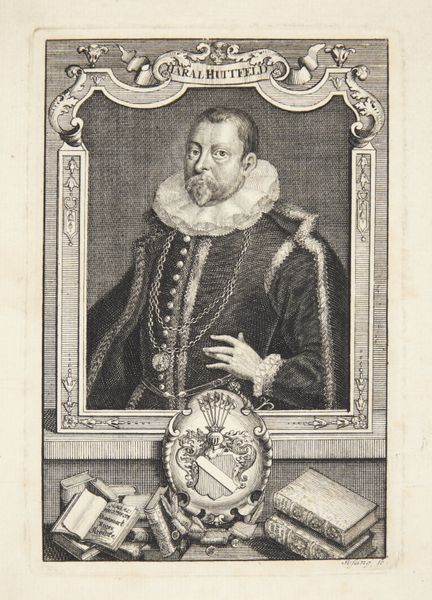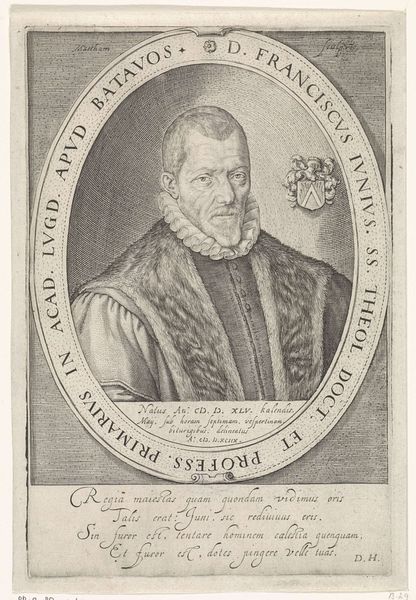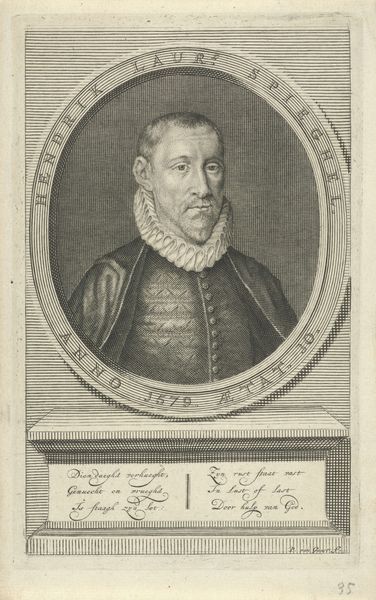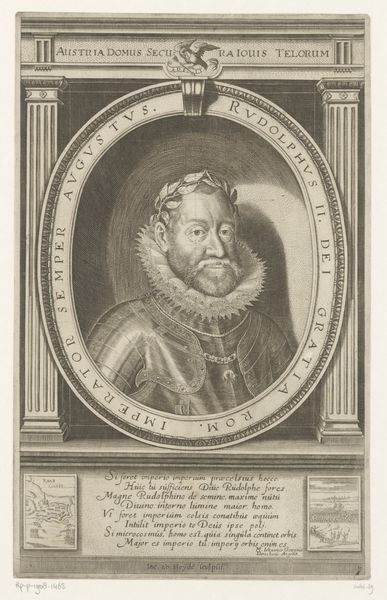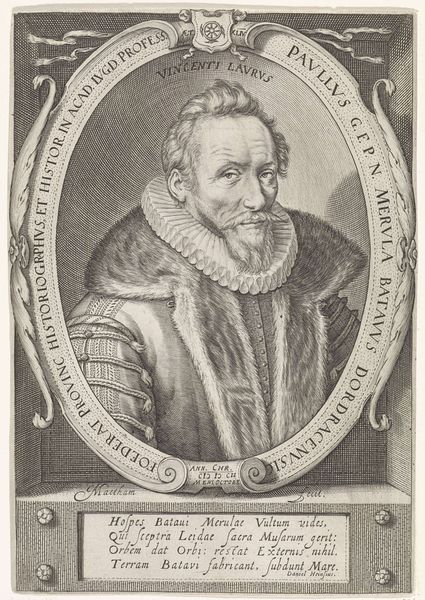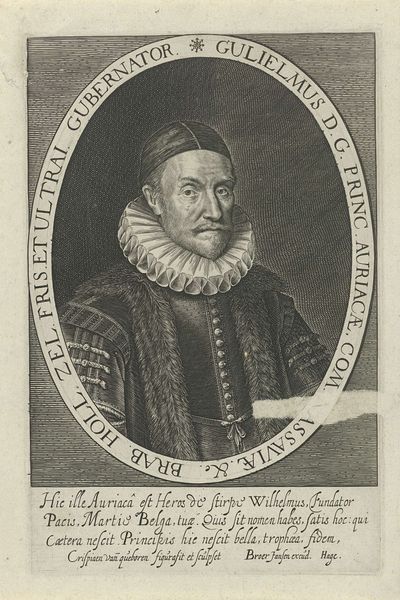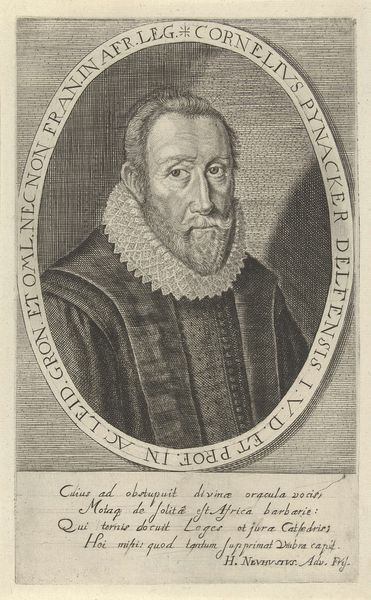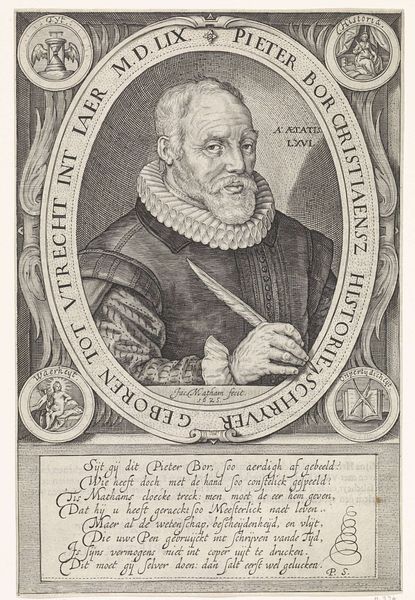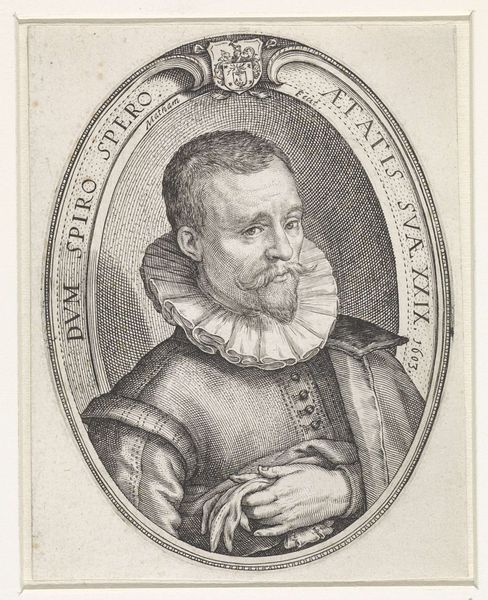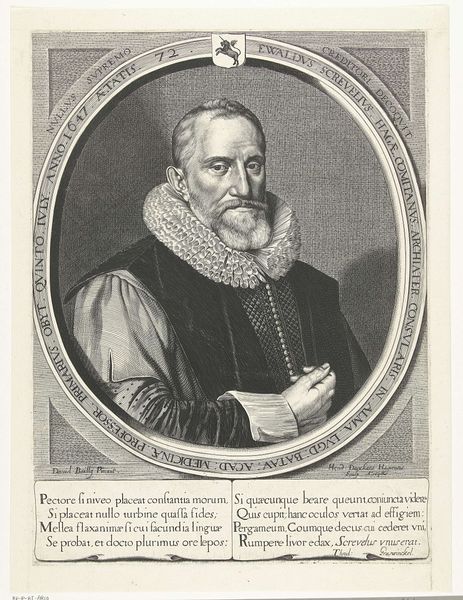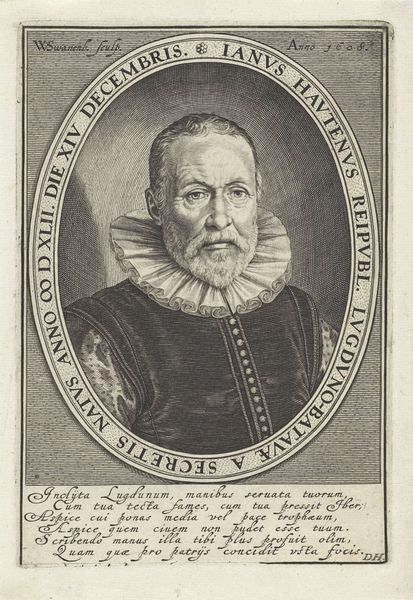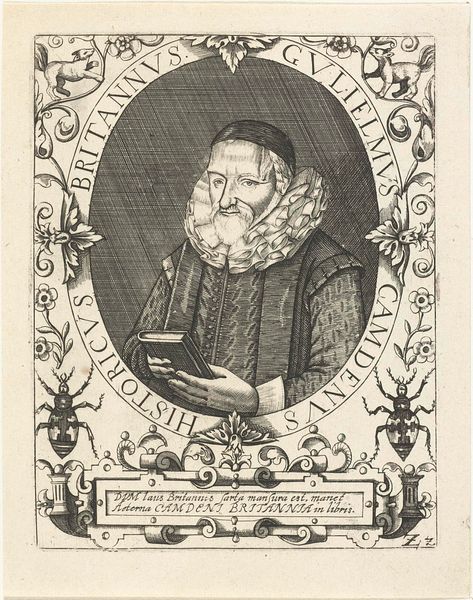
print, engraving
#
portrait
#
baroque
# print
#
history-painting
#
engraving
#
realism
Dimensions: height 188 mm, width 134 mm
Copyright: Rijks Museum: Open Domain
Editor: So, this is "Portret van Theodorus Velius" by Theodor Matham, made sometime between 1630 and 1676. It's a print, an engraving, currently residing in the Rijksmuseum. It has such a formal feel about it, almost stoic. The man looks directly at the viewer, surrounded by all this text. How do you interpret this work? Curator: Beyond its surface formality, I see a carefully constructed image imbued with symbolism and a conscious effort to immortalize the subject. Notice the laurel sprig he holds. Laurel traditionally symbolizes victory, triumph, and honor, a silent nod to his accomplishments, perhaps his medical successes mentioned later in the text below. Editor: Oh, I see it now! He was a doctor, right? It says "medicu" there... Does the laurel allude specifically to his medical triumphs, a symbolic victory over illness and death? Curator: Precisely! And consider the text framing the portrait. It's not merely decorative. Look closely; it calls him the "Dutch Cicero". What qualities does that invoke? What was Cicero known for? Editor: I remember Cicero being a famous Roman orator and statesman…so perhaps Velius was eloquent and influential in his own time and field? The print equates the two. Curator: Exactly! The imagery isn’t random. It is a deliberate act of constructing Velius’s legacy, visually embedding him within a lineage of great thinkers and healers. The portrait becomes more than just a likeness; it's a carefully crafted statement about identity and lasting impact. It invites viewers, even centuries later, to recognize his importance through a visual language of cultural memory. Editor: That’s amazing! It’s so much more layered than I initially perceived. Seeing the symbolism really brings the image to life. Curator: Indeed. These early modern prints aren’t simple reproductions; they’re encoded messages, rich with historical and cultural significance that continue to speak to us today.
Comments
No comments
Be the first to comment and join the conversation on the ultimate creative platform.
